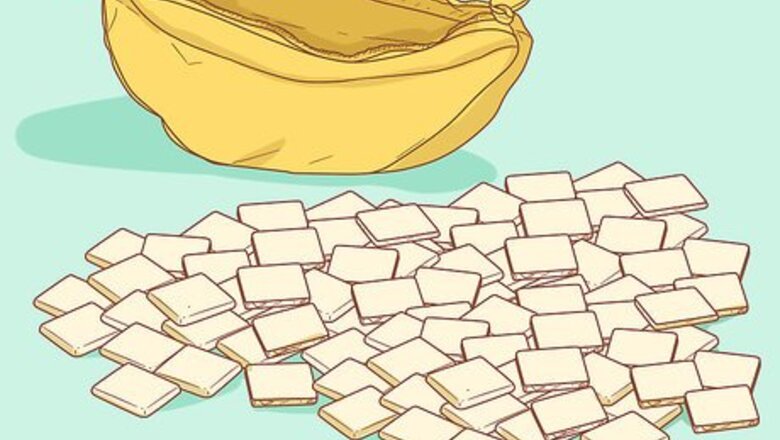
views
- Place all the tiles face-down on a table, then distribute starting tiles to each player.
- Start the game by flipping over all your tiles and creating grids of words. Rearrange your grid at any time.
- Once a player has used all their tiles, everyone takes an extra tile from the center.
- Win the game by being the first player to play all your tiles once the center pile is depleted.
Playing with Traditional Rules
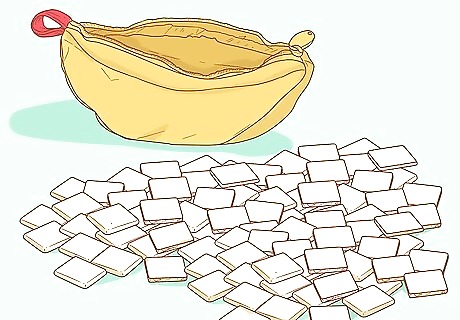
Place all the tiles face-down on a flat surface. Unzip the Bananagram pouch and dump out all 144 letter tiles in a central spot that’s within arm’s reach of all players. Play on a hard, flat surface such as the floor or a table. Make sure no letters are visible and that you’ve flipped over all the tiles. This central group of facedown tiles is known as the “bunch.” Mix the letters around a bit after flipping them over to ensure that they’re randomly distributed.

Distribute starting tiles to each player. The number of starting tiles for each player is determined by the number of people playing the game. A traditional game involves 2-8 players, with tiles distributed according to the chart below: For 2-4 players, draw 21 tiles each. For 5-6 players, draw 15 tiles each. For 7-8 players, draw 11 tiles each.
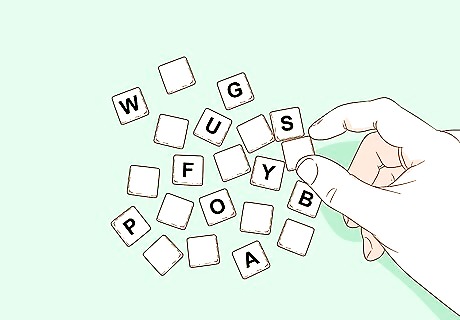
Say “Split!” and flip over your tiles to start the game. This is the signal for everyone to flip over their tiles so the letters are face-up. As you turn over your tiles, start thinking about words that could be formed using these letters. Work quickly, since the game has officially begun! It may help to sort your letters into vowel or consonant groups. Or, just leave them unorganized. Experiment as you play to find a strategy that works for you.
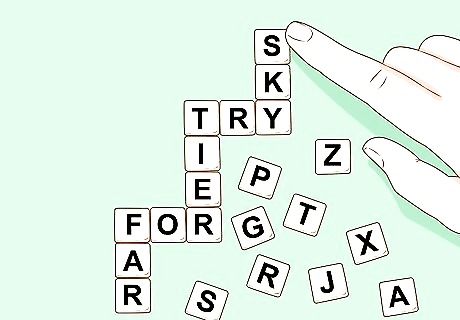
Arrange your tiles into words that intersect like a crossword. Lay out your words to read vertically (top to bottom) or horizontally (left to right), but not diagonally. Race to use up all the letters in your pile. You cannot use proper nouns or abbreviations. Each player creates their own, personal word grid (unlike Scrabble, where all players add on to one group grid). Everyone plays simultaneously—there are no “turns” in Bananagrams. You’re racing the other players to be the first to use all your letters. Consider starting off with a longer word, which gives you more opportunities to build new words.
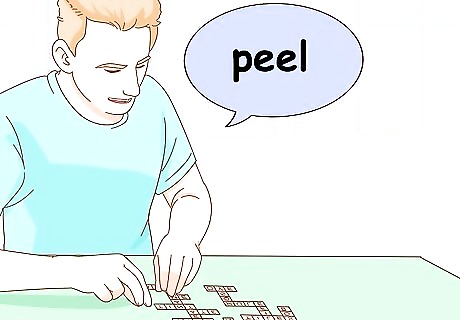
Say “Peel!” once you have used all your tiles. When you declare “peel,” every player (including you) draws 1 new tile from the bunch. If someone else says it, stop what you’re doing and draw your extra tile right away. If you just peeled and you use your new tile right away, peel again! Double-check that all your words are valid and spelled correctly before peeling. One effective strategy is to "peel" as fast as possible, several times in a row. A barrage of new tiles may slow your opponents down!
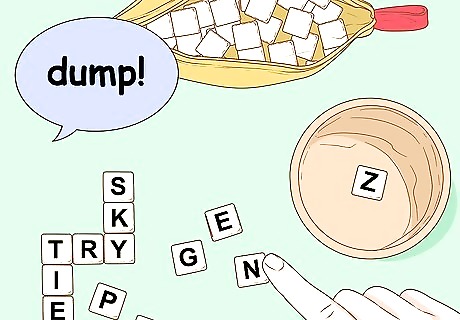
Say “Dump!” to exchange 1 letter tile for 3 new ones. Dumping is a handy way to freshen up your pile if you’re having trouble using your letters. Many players dump tiles if they have too many vowels, too many consonants, or even just a tricky letter like an X or Q. Unlike peeling, other players don’t have to dump their own tiles, as well. Be sure to dump your letter far away and face-down in the bunch so you don't pick it up immediately if you draw again.

Rearrange your grid to fit in new letters. Move your tiles around any time you want in order to make new words and layouts. Unlike Scrabble, you’re not locked into any 1 arrangement. Just be aware that you might have to hurry to get all your letters in a row again. In this example, the player has a newly drawn T. By swapping it with the D in “FOOD,” the player was able to place the D at the end of TIE to make TIED, effectively using all of their tiles. Two letter words like QI, IT, and OE are useful placeholders for new letters until you can work them into a larger word.
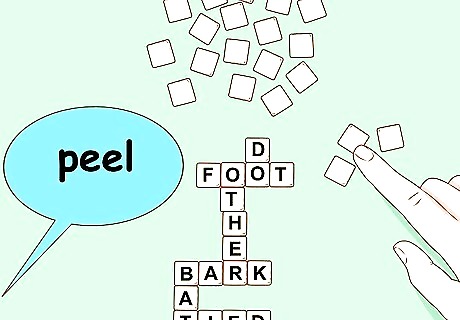
Continue peeling until the bunch has fewer tiles than there are players. Once the bunch is depleted, the next person to peel wins. For example: a player peels, and after all 5 players have drawn a new tile, there are only 4 tiles left in the bunch. At this point, the first person to use up all their tiles in their word grid is victorious. Sometimes, the number of tiles divides evenly among players. If this is the case, you’ll end up with no tiles left in the bunch after the final peel.
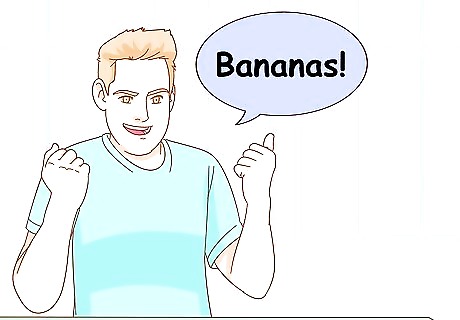
Shout “Bananas!” if you’re the first player to use up all your tiles. Rather than peel one more time, shout “Bananas” to tell the other players you’ve used your last tile. Since there are no more tiles in the bunch to draw, the game is now over. The player who called “Bananas!” first is the winner. If 2 players yell “Bananas!” at the same time, you have a tie. In this case, the player with the longest word in their grid is the winner—but feel free to come up with another house rule to determine the tie-breaker. If it doesn't seem like anyone can use up all their tiles, look a bit more closely! You may have to rearrange your grid to use up your tiles and be the first to call "bananas."
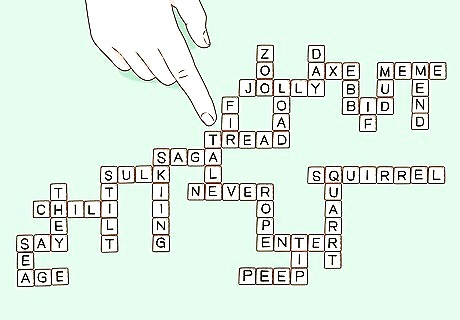
Inspect the winning grid for disqualifying words. If the player who shouted “bananas” has used any illegal words, like proper nouns or abbreviations, then someone says “Rotten banana!” and the player is disqualified. Mix up their tiles and add them back to the bunch, then continue the game until there’s a new winner.
Using Alternate Rules
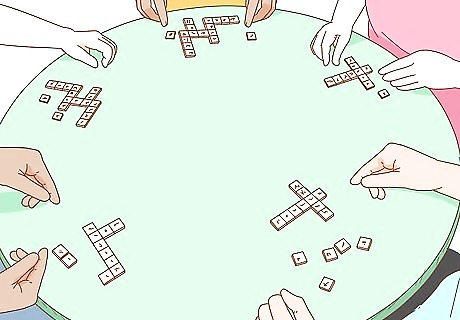
Divide all the tiles among the players for a slower-paced game. Start by dividing all the tiles equally among players. Each player flips over their tiles at the start of the game and tries to create a grid of interlocking words using all their tiles. When 1 player uses all their letters, they call “Bananas!” and the game is over—assuming that player doesn’t have any disqualifying words in their grid. If the game ends in a tie or a stalemate, with no one able to use all their letters, the winner is the player with the longest word in their grid. In this version, there’s no peeling or dumping—work with the letters you have.

Play without peeling for a fast-paced game. Have each player draw 21 tiles from the pouch and place them face down in front of them. Then, play Bananagrams the usual way—but without peeling (though players can still dump) The first player to incorporate all 21 letters into a word grid and yell “Bananas!” is the winner. This alternative is great for quick games while waiting in restaurants or doctor’s offices.
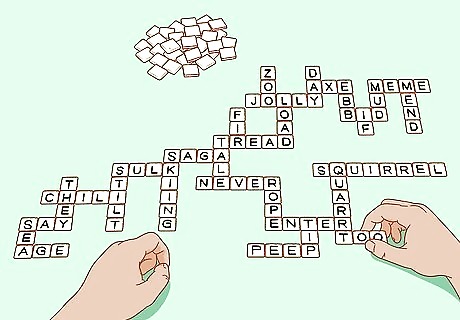
Play a game of Bananagrams solitaire to hone your skills. For a single-player game, place all the tiles facedown, then flip over 21 tiles. Start a stopwatch and play as usual, although there’s no need to call out “peel” or “dump” to alert other players. Once you’ve used all the tiles, stop the timer. Play 2-3 more rounds to see if you can beat your own best time. Alternatively, challenge yourself to create a grid using the fewest words possible. Look for longer, more complex words to play.
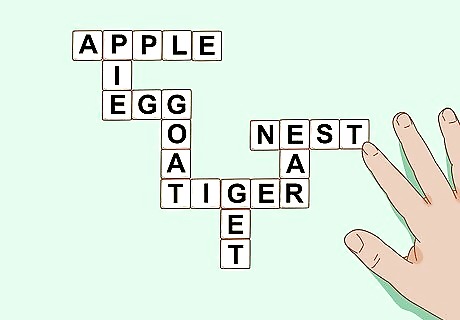
Play cooperatively to develop concentration and reading ability. This version of Bananagrams is great for children and helps them practice their reading and spelling skills. Start by placing all the tiles face up. Then, all players help in creating 1 large interlocking word grid. Take turns, or play freely and allow anyone who has an idea to play a word. The game is over when all the tiles have been used to create one big grid. Everyone wins in this version!














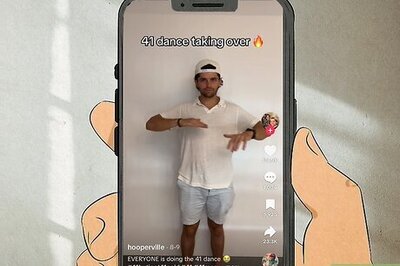


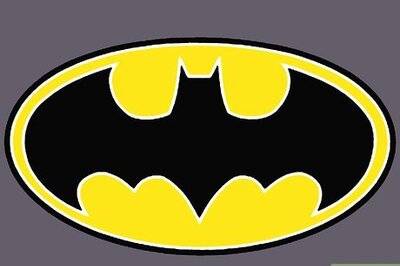
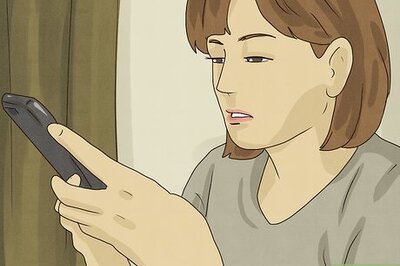

Comments
0 comment